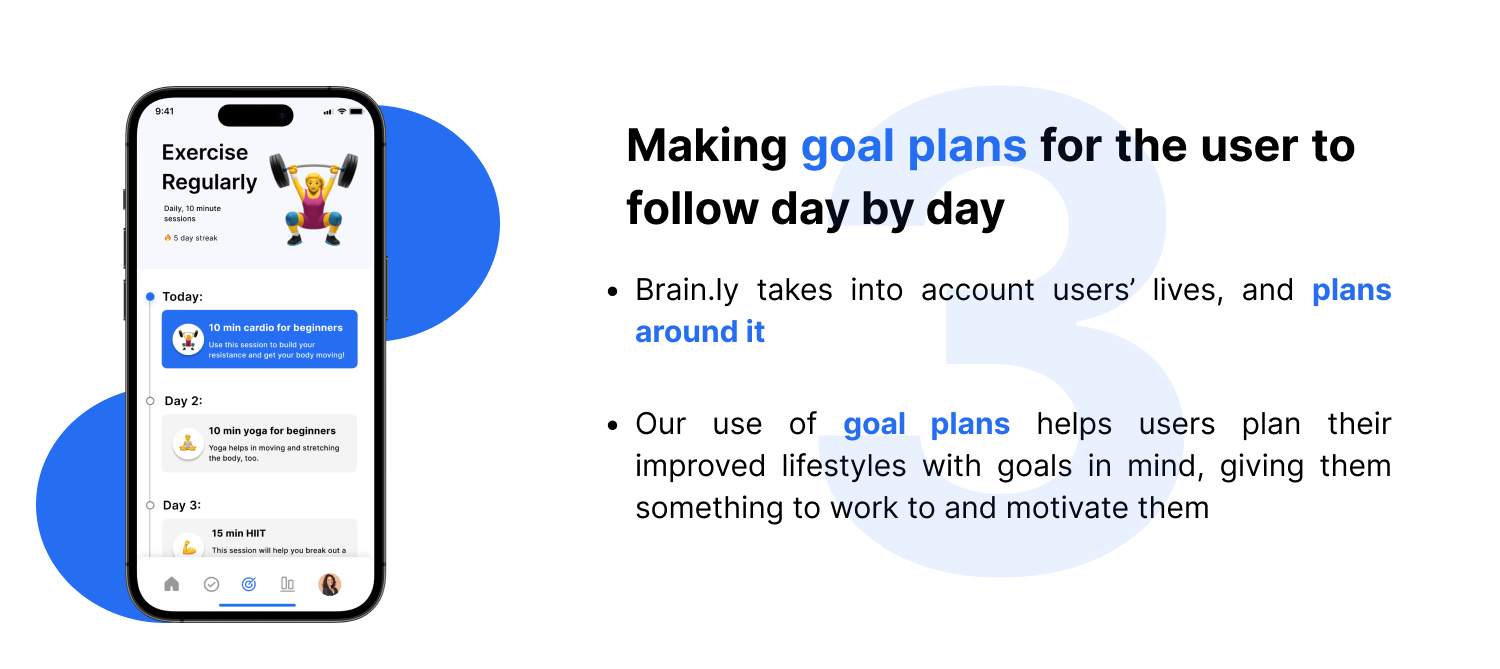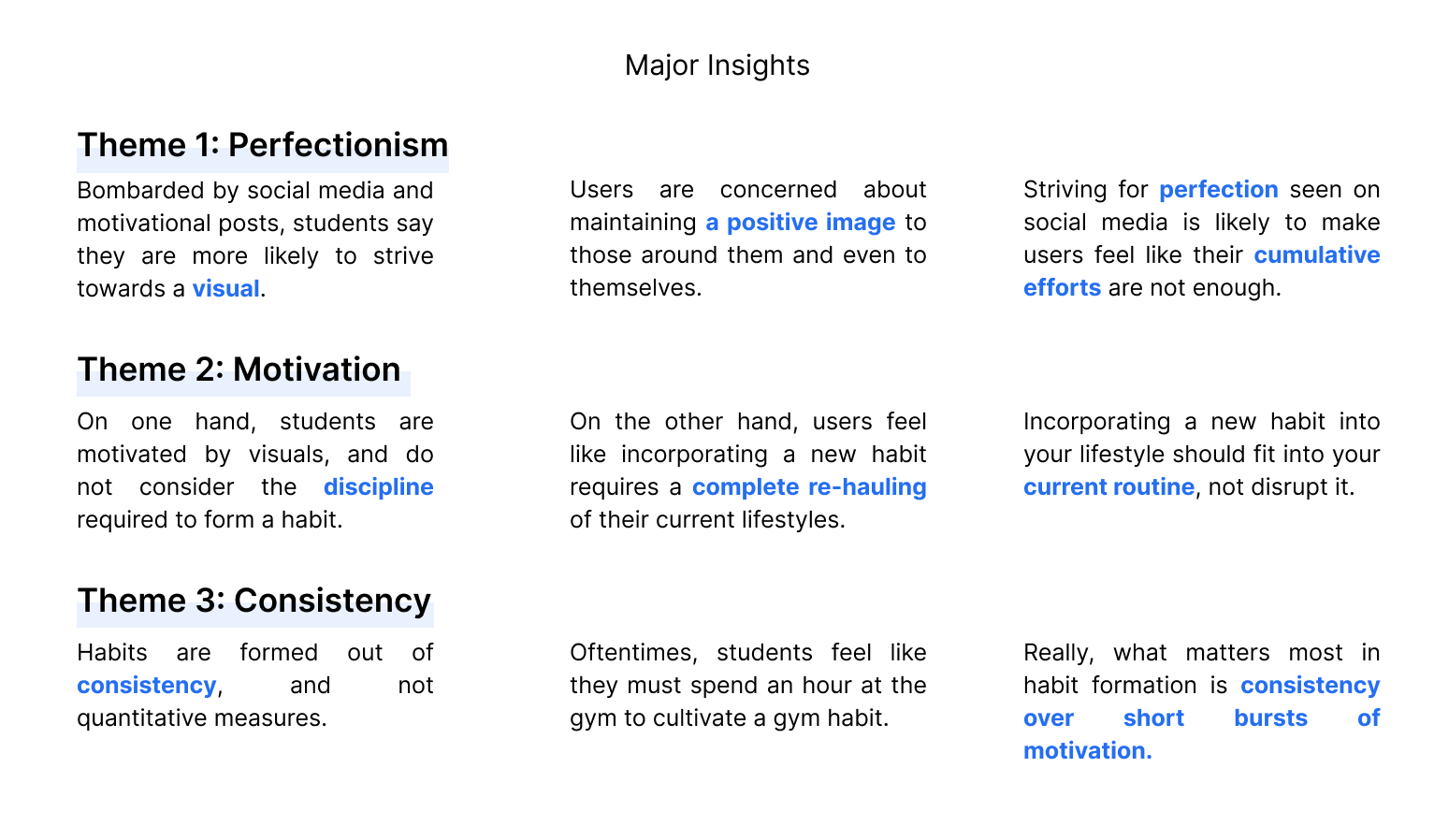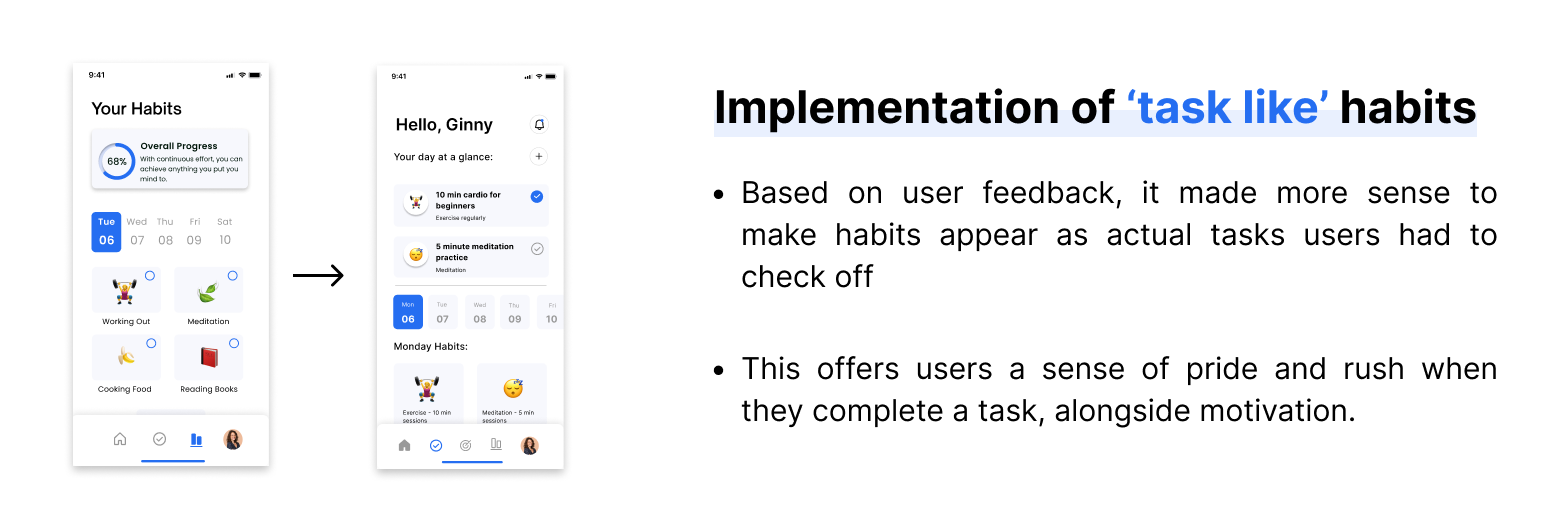Brain.ly is a project conceived with the aim of enabling users to build sustainable habits aimed at serving them in the long-term. The idea behind the project was to create an interface where users could log and engage in activities that would improve their mental health and cognitive abilities like organization, habit formation, and memory. The project was developed at my university’s incubator, UW CUBE.
Project Overview
My Role
Conducted in-depth user interviews and was responsible for end-to-end design of product’s prototype and user experience.
Timeline
4 days
My Team
5 members
PROBLEM STATEMENT
We all fail to build habits which serve us in the long-term.
With the COVID-19 pandemic, we are feeling the strain and impact our lifestyles have upon us, now more than ever. With many of us itching to improve our lives by exercising more, eating healthier, and sleeping earlier, there has to be an easier method to getting our lives on track. Thus, we asked ourselves, how might we build habits that are sustainable, and backed by psychological principles?
SOLUTION
An all-in one habit tracking application that incorporates healthier habits into your daily routine gradually.
These are the three components of our solution that make it work for users to help them incorporate new, healthier habits into their lives with ease.
RESEARCH PROCESS
We need to incorporate habits into your routine, not change it.
There is too much pressure to completely re-vamp your lifestyle rather than make small changes to it until you get to the place you want to be. During our research process, we came across a quote from Atomic Habits author James Clear, in which he writes:
“You do not rise to the level of your goals. You fall to the level of your systems.”
With our completed user reseach in mind, we wanted to create a system for the user which focuses on everyday, simple changes. We decided to use this knowledge to incorporate better habits into everyday life, and made the habits short, and easily repeatable. As the user uses the app more often, time dedicated to habits increases, in relation to users’ discipline increasing alongside. Based on user feedback, we changed a few components of the final design to better serve our target user demographic.
USER KNOWLEDGE & PERSONAS
Identifying our user’s needs and pain points throughout the day helped us determine the key features for our product.
With the help of 40+ students opinions, we were able to create a persona to better target specific needs our user demographic might have when using Brain.ly. Their opinions and feedback were crucial to ensuring we had created a helpful product in the first place, and we are very grateful we had the opportunity to do so.
THE MAIN INSIGHT + A NEW DIRECTION
We began by asking 40+ students the following questions:
Tell me about the last goal you set.
Do you have habits that you never skip during the day? Explain them to us, please.
How do you incorporate new habits in your life?
What are the main difficulties you face when trying to implement change into your routine?
Our findings are listed below:
RESEARCH FINDINGS
Habit implementation is slow, and often takes a lot of time.
We began by creating a productivity application targetted at helping students manage their busy lives. However, as time progressed, we realized that not only is the idea overdone, but does not provide meaningful change in the users’ lives. A major theme that came out during our user research was the fact that many students we spoke to wanted to implement healthier habits in their lives, but often felt frustrated and unmotivated after missing one day. Hence, we took on a new direction in terms of long-term habit formation to better help users manage their lives and goals.
IMPROVEMENTS
2 major improvements influencing our designs
The final product
Check out prototype here.
KEY TAKEAWAYS
Implementing systematic habit formation and mental health practices
UI/UX RESEARCH • UX DESIGN • BRAND STRATEGY
During our research process, we also uncovered three major themes that kept cropping up during our conversations.
FINAL SCREENS
Thank you for reading! 🧠
For more work inquiries please email me at
uxmeetsmeg@gmail.com 😊











